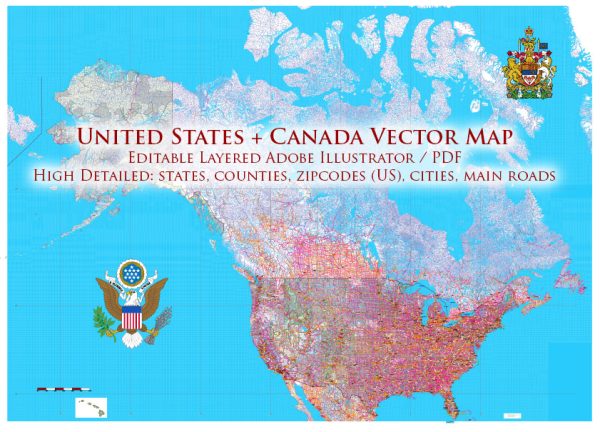The railroad systems in the United States and Canada are extensive and have played a crucial role in the development and economic growth of both countries. Here’s an overview of the railroad systems in each country:
United States:
1. History:
- Railroads have been a fundamental part of the U.S. transportation infrastructure since the early 19th century.
- The First Transcontinental Railroad was completed in 1869, connecting the East and West coasts and revolutionizing transportation.
2. Network:
- The U.S. has one of the most extensive and dense railroad networks in the world.
- Major railroad companies include Union Pacific, BNSF Railway, Norfolk Southern, and CSX Transportation.
- Railroads connect major cities, industrial centers, and ports, facilitating the transportation of goods and passengers.
3. Freight and Passenger Transport:
- Freight transport is a significant component, with railroads moving vast amounts of goods such as coal, agricultural products, and manufactured goods.
- While passenger rail service is not as widespread as in some other countries, Amtrak operates long-distance and regional passenger trains.
4. High-Speed Rail:
- The U.S. has been exploring the development of high-speed rail corridors, but progress has been slower compared to other countries.
Canada:
1. History:
- Railroads played a critical role in the development of Canada, connecting the eastern and western regions.
- The Canadian Pacific Railway (CPR) and Canadian National Railway (CNR) are two major players with historical significance.
2. Network:
- Canada has a vast railway network, connecting cities, ports, and resource-rich areas.
- Canadian Pacific Railway and Canadian National Railway dominate the freight rail sector.
3. Freight and Resource Transport:
- Railroads are crucial for transporting natural resources like minerals, forestry products, and oil.
- Freight transport is a vital component of the Canadian economy.
4. Passenger Rail:
- VIA Rail Canada is the primary passenger rail service, offering intercity travel between major cities.
- Passenger rail service in Canada is not as extensive as in some other countries.
5. International Connections:
- Both the U.S. and Canada have cross-border rail connections, facilitating the movement of goods and passengers between the two countries.
Challenges and Future Developments:
- Infrastructure Upgrades: Both countries face the challenge of maintaining and upgrading aging rail infrastructure.
- Technological Advancements: The implementation of advanced technologies, such as Positive Train Control (PTC), is a focus for enhancing safety and efficiency.
- Environmental Considerations: Rail transport is generally more environmentally friendly than other modes, and there is an increasing emphasis on sustainability and reducing emissions.
Overall, the railroad systems in the U.S. and Canada continue to evolve to meet the demands of a growing and dynamic economy.


 Author: Kirill Shrayber, Ph.D.
Author: Kirill Shrayber, Ph.D.